Country Definitive Playing Cards
Modern British regional postage stamps on a set of playing cards.
Regional stamps (later called country definitive stamps) were introduced for Scotland, Wales and Northern Ireland as long ago as 1958. In 1999 it was decided that England too should have its own regional stamps. Conveniently, that now made four regions each with their own stamps, one for each of the four suits. New designs were created, as featured on the present set of cards. Individual stamps for England (S), Scotland (C), Wales (H), and Northern Ireland (D) are depicted on the court cards and Aces. Complete sets of four stamps for each respective country are displayed down the middle of the pip cards, with the Royal Mail coat of arms in the background. The Joker shows the four stamps in use for European destinations (“E”). A curious quirk or anomaly (or error?) is that the top-value stamp in the Scottish and Welsh sets is 64 pence, whereas the top-value stamp in the English and Northern Irish sets is 65 pence! True, postage rates were changing from 1999 to 2000; however, they have always been the same for all parts of the UK. See the box►


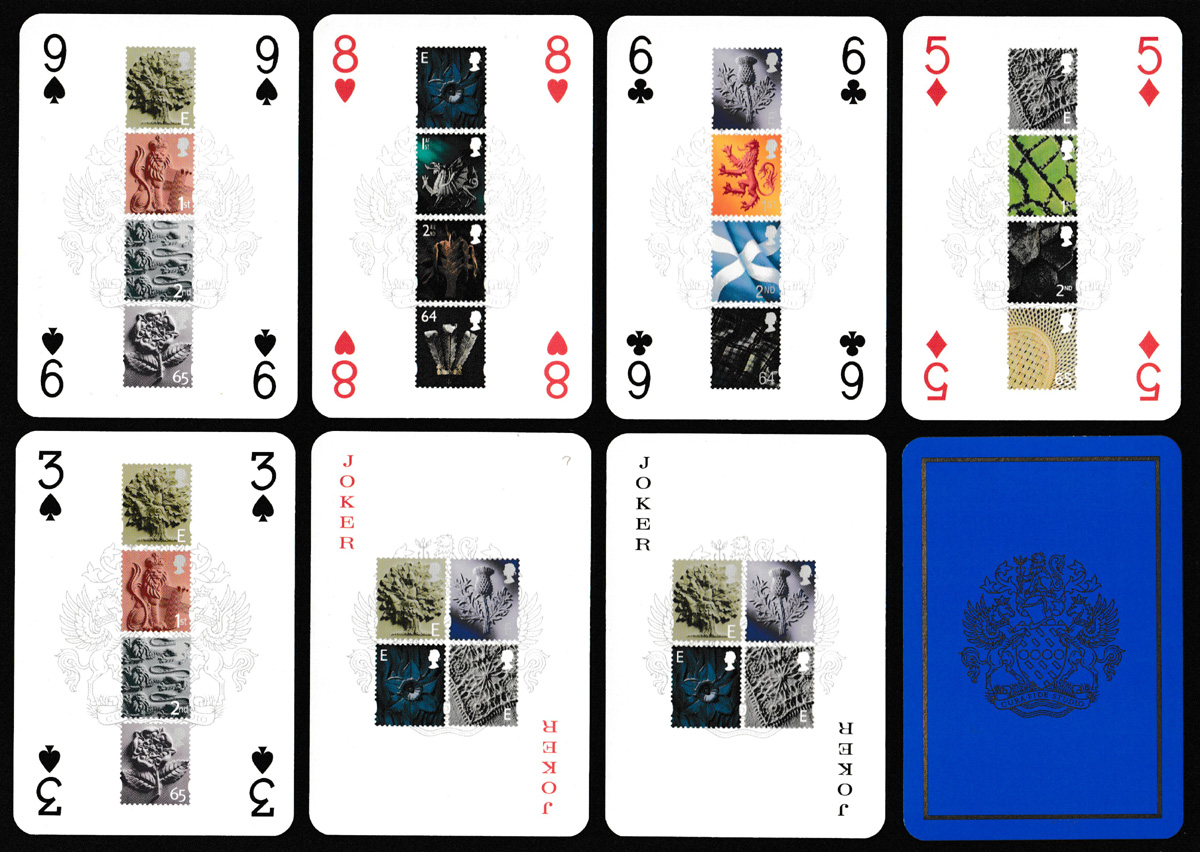
Above: Country Definitive Playing Cards printed by Carta Mundi for Royal Mail, c2000. 52 cards + 3 Jokers (2 red, 1 black) in tuck box. Size: 67 x 97 mm.
By Roddy Somerville
France • Member since May 31, 2022 • Contact
Roddy started collecting stamps on his 8th birthday. In 1977 he joined the newly formed playing-card department at Stanley Gibbons in London before setting up his own business in Edinburgh four years later. His collecting interests include playing cards, postcards, stamps (especially playing cards on stamps) and sugar wrappers. He is a Past President of the Scottish Philatelic Society, a former Chairman of the IPCS, a Past Master of the Worshipful Company of Makers of Playing Cards and Curator of the WCMPC’s collection of playing cards. He lives near Toulouse in France.

Leave a Reply
Your Name
Just nowRelated Articles

Songs with Flute accompaniment
Eighteenth century English engraved cards with music for voice and flute.
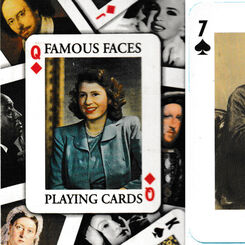
Famous Faces playing cards
Images of the great and the good to be found in the National Portrait Gallery, London.

Hand-drawn transformation cards, c1875
A complete set of hand-drawn transformation cards from c1875, using a standard De La Rue pack.
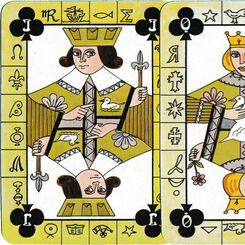
Golden Charades
Drawn by Bernard Cookson, the clues, riddles and puzzles on these cards could have won the solver a ...
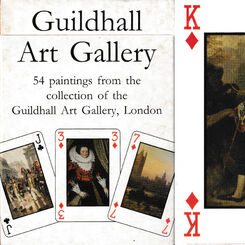
Guildhall Art Gallery playing cards
54 different paintings from the collection of the Guildhall Art Gallery, London.
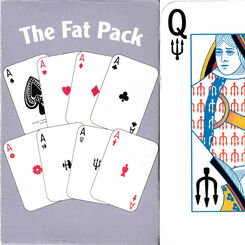
The Fat Pack
A vastly expanded pack with 8 suits for playing traditional or new games, devised by Roger Howard Bu...

Hollywood Greats playing cards
18 stars in black and white from the Golden Age of Hollywood.

Guinness World Records Cards
52 Guinness World Records Cards published by if, Pickering, UK, 2011.
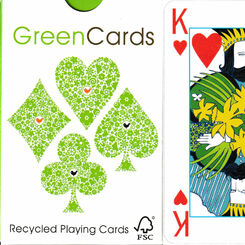
Green Cards
Recycled playing cards with striking, non-standard courts.

Disney playing cards (Waddingtons)
Four of the stock Disney characters on a pack from Waddingtons.

Soroptimist International Scotland South Region
Celebrating 100 years of Soroptimist International, 1921-2021.

Politically Incorrect Happy Families
A Happy Families set with many differences from a conventional one.
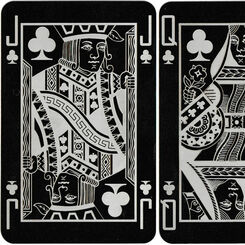
Stainless steel playing cards
Out-of-the-ordinary set in an unusual container.

Pentacards
A five-suited set of playing cards published by Fleet and Case Games Ltd., Rainham, Kent, UK, c.1980...
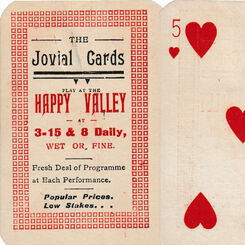
The Jovial Cards
Publicity items for a group of entertainers, Southend-on-Sea, Essex, UK, 1911.

David Kindersley Centenary
Celebration of the work of David Kindersley, stone letter-carver and typeface designer. Published by...
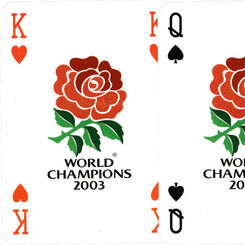
Official England Rugby Playing Cards
Pack celebrating the rugby world champions of 2003. Produced by MMcardz.
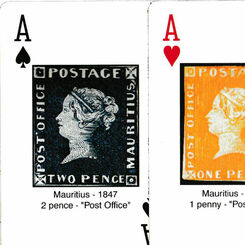
Rare Stamps of the World
Fifty-five rare stamps of the world in full colour, published jointly by David Feldman SA of Switzer...
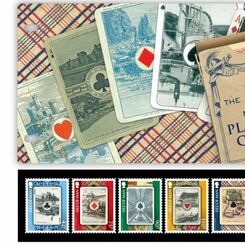
Manx Playing Card Stamps
Isle of Man stamp issue based upon the history of Manx themed playing cards, featuring six fascinati...
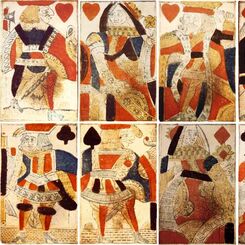
Hunt, c.1800
Standard English pattern playing cards manufactured by Hunt, c.1800.
Most Popular
Our top articles from the past 60 days


 Your comment here. Your comment here. Your comment here. Your comment here. Your comment here. Your comment here. Your comment here. Your comment here. Your comment here. Your comment here. Your comment here. Your comment here. Your comment here. Your comment here. Your comment here. Your comment here. Your comment here. Your comment here. Your comment here. Your comment here. Your comment here. Your comment here. Your comment here. Your comment here. Your comment here. Your comment here. Your comment here. Your comment here. Your comment here. Your comment here. Your comment here. Your comment here.
Your comment here. Your comment here. Your comment here. Your comment here. Your comment here. Your comment here. Your comment here. Your comment here. Your comment here. Your comment here. Your comment here. Your comment here. Your comment here. Your comment here. Your comment here. Your comment here. Your comment here. Your comment here. Your comment here. Your comment here. Your comment here. Your comment here. Your comment here. Your comment here. Your comment here. Your comment here. Your comment here. Your comment here. Your comment here. Your comment here. Your comment here. Your comment here.




















